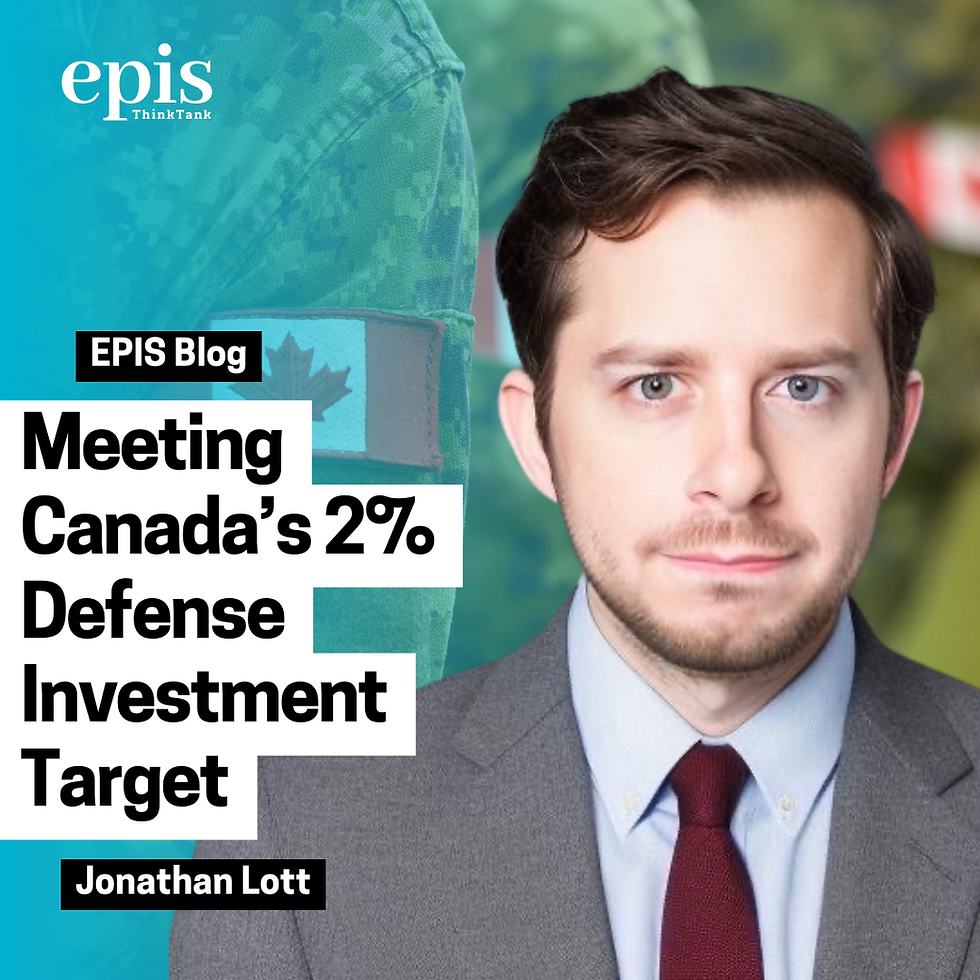In 2014, the Member States of NATO pledged to commit a minimum of 2% of their national GDP to “defence expenditure”—defined by NATO as
“…payments made by a national government (excluding regional, local and municipal authorities) specifically to meet the needs of its armed forces, those of Allies or of the Alliance….They might also include parts of other forces such as Ministry of Interior troops, national police forces, coast guards etc. In such cases, expenditure is included only in proportion to the forces that are trained in military tactics, are equipped as a military force, can operate under direct military authority in deployed operations, and can, realistically, be deployed outside national territory in support of a military force.
Expenditure on other forces financed through the budgets of ministries other than the Ministry of Defence is also included in defence expenditure….Expenditures for stockpiling of war reserves of finished military equipment or supplies for use directly by the armed forces are included….Expenditure for the military component of mixed civilian-military activities is included, but only when the military component can be specifically accounted for or estimated. For example, these include airfields, meteorological services, aids to navigation, joint procurement services, research and development. Research and development (R&D) costs are included in defence expenditure….” (emphasis added)

According to the Atlantic Council, 25 of NATO’s current 32 States (excluding Canada) are meeting the 2% threshold in 2024. In many ways, the global threat environment today is larger and more complex than ever before. Canada should be given credit for increasing its military spending, especially in a political and economic environment that prefers to concentrate on other priorities. Nevertheless, Canada’s proximity to increasingly aggressive regional adversaries (namely Russia and China), alongside the changing character of war(fare), demand a stronger investment in national defense. Although conventional arms must be the foundation of defense, a rethink of what exactly is and is not defense expenditure is necessary in a period of innovation and 5GW.
Recent traditional investments in shipbuilding—including the recent ICE-PACT—underscore the necessity for a capable blue water navy, and efforts like these must be supported. But China’s rapidly growing commercial navy, a lynchpin of China’s grand strategy, is just one example of how State power cannot be fully divorced from military aims. Chinese domination of global cargo ship manufacturing, their influence on supply chains, and their “fishing vessels” / “maritime militia” threaten a kind of unilateral power which (re)shapes the international environment even though many consider such actions “measures short of war.” (And that’s not even to mention the PRC’s growing military fleet, certain to be part of a future Taiwan invasion, if/when such a thing occurs.)
The “Global Disorder” we find ourselves in has always existed in one form or another. But the multipolarity growing across the globe today is itself a form of war—even if the fundamentals of international law and the vicissitudes of politics do not always define it as such. The Chinese and Russian understandings of war, alternating between 3GW, 4GW, and 5GW (or even 6GW) conceives of war in all its aspects: a truly full-spectrum theater of operations. When thinking of war (a mere continuation of politics by other means, to quote Clausewitz) and defense, it makes sense for NATO to build a broad, multidimensional defense strategy—and therefore reconsider what ought to be considered spending towards the 2% recommendation.
For example, the Canadian Coast Guard is administered by Fisheries and Oceans Canada—not Canada’s Department of National Defence. In itself, that is fine, but the government could easily reclassify the Coast Guard as part of its broad national defense strategy, and therefore include the entire Coast Guard budget into the 2%. After all, maintaining shipping lanes, icebreaking, managing pollution spills, marine search and rescue, and maintaining lighthouses are all part of keeping a country safe. A couple weeks of tactical training would be enough to reclassify them as a plausible operational reserve force, even if they never see international assignments.
Another example: Canada’s rapidly warming Arctic region is disrupting roads and communications to remote northern communities. This also impacts the transit of supplies, leading to potentially life-threatening situations. It is in the interest of the armed forces to be able to maintain a presence across all parts of the country—whether to combat wildfires, perform humanitarian operations, or resist a hybrid invasion. The budget used to build roads and bridges (often considered military objectives in times of armed conflict) could also circumstantially be included in Canada’s 2% defense spending. At times, the Royal Canadian Mounted Police have served on United Nations peacekeeping missions and could be counted.
Research into climate change and geoengineering techniques could also be included. Many countries and international organizations list climate change in their top threat portfolios—so why haven’t the armed forces of the world broadly considered climate change mitigation, reforestation efforts, and meteorological research into their defense budgets? The same could be said for commercial satellites, which transfer critical data and may be requisitioned for military purposes in times of emergency. Practically everything is used by military forces in one form or another, and therefore could meet NATO’s defense standard when viewed inclusively.
If anything can be a weapon, then almost anything may be considered as spending towards the 2% defense pledge. Agriculture, chip manufacturing, mass media, fitness programs, digital infrastructure, medicine…every aspect of life is being (or can be) weaponized or leveraged by our adversaries for the attainment of their objectives. A holistic view of defense would recognize this—and reassess accordingly.
A likely critique of this approach could claim that simply reclassifying existing spending does not in itself improve military readiness. On one hand, at least this reclassification would help Canada meet their 2% promise. But more importantly, it would communicate a cognitive and cultural shift in how a society views war in the modern age. This psychological change is arguably the most necessary in preparing our citizens for the threats of tomorrow—which are indeed already the threats of today.

Jonathan Lott is a former history, Latin, and English teacher with an LL.M. in International Human Rights and Humanitarian Law from the European University Viadrina. He has also run unsuccessfully for Massachusetts State Senate (2016) and the U.S. House of Representatives (2020), and is the author of Hitchhike America. The opinions and views in this article are not the official positions of EPIS, Canada, or of any other government, and should not be taken as such.

Comments